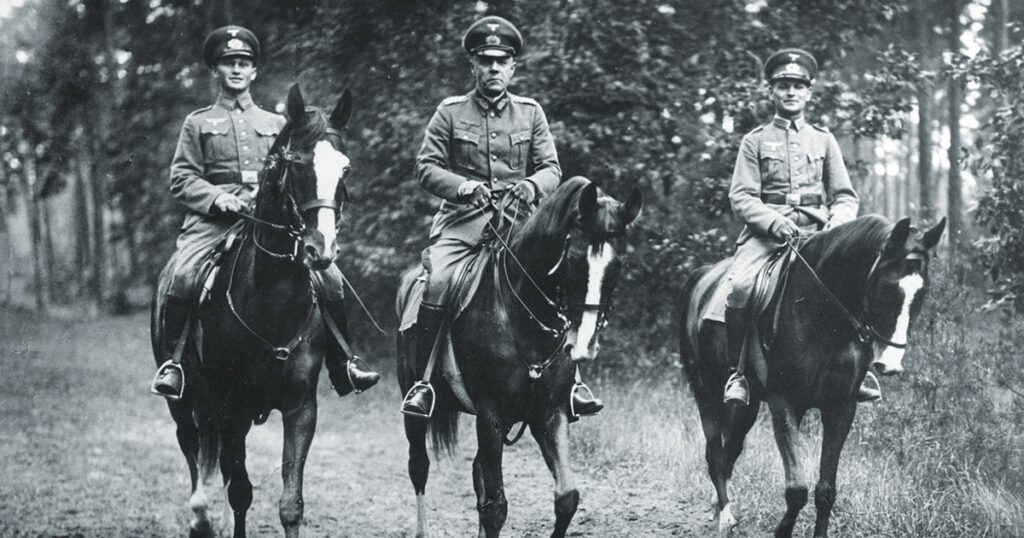
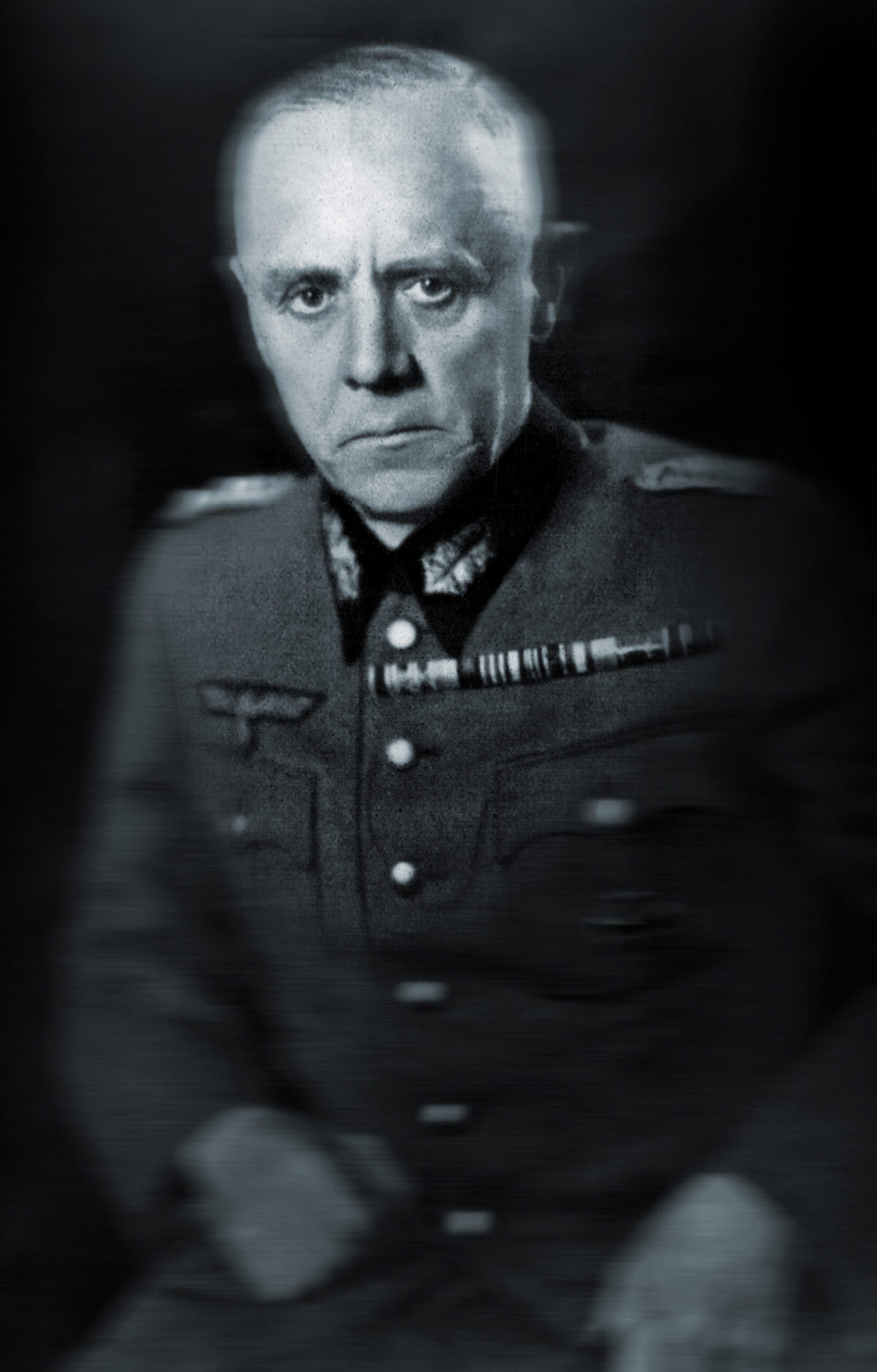
Ludwig August Theodor Beck was the Third Reich’s most enigmatic and tragic senior general. As the first chief of the resurrected German Army General Staff in 1935, he played a leading role in building the post-World War I rump-Reichswehr into the Wehrmacht of World War II. He was a brilliant military thinker and the primary author of the 1933 operations manual Truppenführung (Unit Command), which remained the foundation of Germany’s war-fighting doctrine until 1945—and beyond. Yet Beck became a staunch anti-Nazi who opposed the politicization of the army and many of Hitler’s plans for large-scale wars of conquest. After retiring in protest in 1938, Beck became one of the leaders of the Widerstand—the German resistance.
He was born in a suburb of Wiesbaden, Germany, on June 29, 1880, a descendent from an old Hessian officer family. In 1898 he joined a Prussian field artillery regiment based in Strasbourg as anofficer candidate and received his commission as a 2nd lieutenant the following year. From 1908 to 1911 he attended the highly selective Kriegsakademie (War College), where General Carl von Clausewitz once served as the director. In 1913 he became a full-fledged member of the General Staff. During World War I he served as the General Staff Officer Ia (operations officer) of two different divisions. From 1916 to 1918 he was assigned to the General Staff of Army Group German Crown Prince on the Western Front. When the Armistice went into effect in November 1918, Beck was responsible for planning the orderly and controlled withdrawal of some 90 German divisions back across the Rhine. It was an overwhelming responsibility for a 38-year-old major.
Beck was a cultured man with an intellectual bent. He spoke French and English; he played the violin; and he was an expert equestrian. But he did not have very much of a private life. He married in 1916; but he had to return to the front after the briefest of honeymoons. His daughter was born the following year; but then his wife died late in 1917. Much like Britain’s Field Marshal Sir Bernard Montgomery, whose wife also died young, Beck withdrew into his profession. The introverted officer also remained increasingly aloof from the bonhomie social life of the traditional officers’ messes.
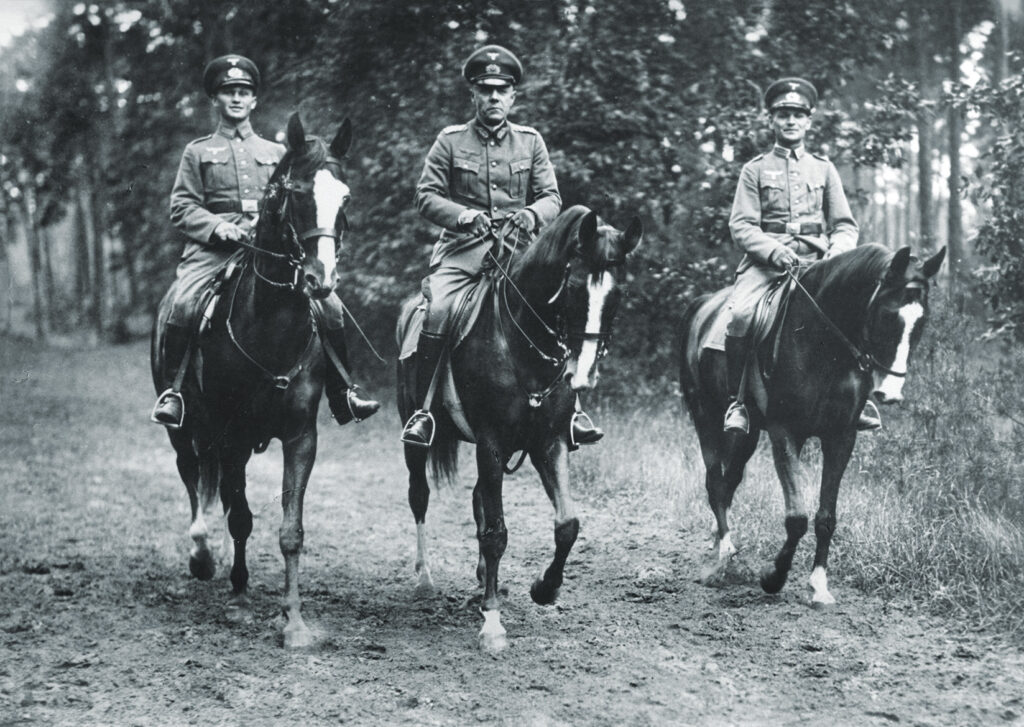
Following the war, Beck was one of the only 3,718 officers out of 227,081 selected for retention in the 100,000-man Reichswehr that Germany was allowed under the draconian terms of the Versailles Treaty. The treaty restrictions also prohibited Germany from having a General Staff. The Germans circumvented that restriction by camouflaging the Reichswehr’s General Staff as an innocuous-sounding organization called the Truppenamt (Troop Office). The treaty also forbade Germany from even training General Staff officers, forcing the closing of the Kriegs-akademie. The Reichswehr circumvented that by conducting decentralized leadership training in the military districts. The successful graduates were designated a Führerstabsoffizier (Leader Staff Officer), the cover term for a General Staff officer.
During the 1920s Beck rotated between troop commands as an artillery officer and assignments in the Truppenamt. From 1919 to 1922 he was assigned to special duties, working personally for Colonel General Hans von Seeckt, the first chief of the Truppenamt and later the Chief of the Army Command. Seeckt was the key architect of the small Reichswehr as an elite Führerheer (Leaders’ Army), the foundation for the army’s rapid expansion at some point in the future.
Of the many wide-ranging reforms carried out under Seeckt, one of the most important was a new manual for tactical doctrine published in 1922. H.Dv.487 Führung und Gefecht der verbundenen Waffen (Command and Combat of the Combined Arms), was widely called “Das FuG.” Unlike the post-World War I operational manuals of almost every other Western army, Das FuG abandoned the concept of trench warfare. Instead, it emphasized mobile warfare while also adopting many of the offensive and defensive technical and tactical innovations that evolved during the First World War. Das FuG stressed the primacy of the offensive, with encirclement combined with a frontal or flank holding action as the preferred tactical maneuver in most cases. The defensive was purely a temporary economy of force measure in preparation for going on the offensive.
In 1931 and 1932, Beck had been the lead author of a revision of Das FuG to bring the doctrine up to date with the rapidly emerging potentials of motorized warfare, aviation, and electronic communications. His editorial assistants were Generals Werner von Fritsch and Carl-Heinrich von Stülpnagel. Published in 1933, H.Dv.300 Truppenführung (Unit Command), continued Das FuG’s focus on mobile and offensive operations, with entire paragraphs from Das FuG carried over verbatim into Truppenführung. One very significant addition to the new manual, however, was the introduction. In 15 elegantly phrased and highly philosophical paragraphs, Beck set the manual’s tone. Among his observations were that the conduct of war is subject to continual development, with new weapons dictating new forms of warfare; regulations alone aren’t enough to fight a war and such principles must conform to the situation at hand; military command requires leaders capable of judgment, with clear vision and foresight, and the ability to make independent decisions, and to carry them out unwaveringly and positively; and that every man, from the youngest soldier upward, must commit his whole mental, spiritual, and physical strength to his unit.
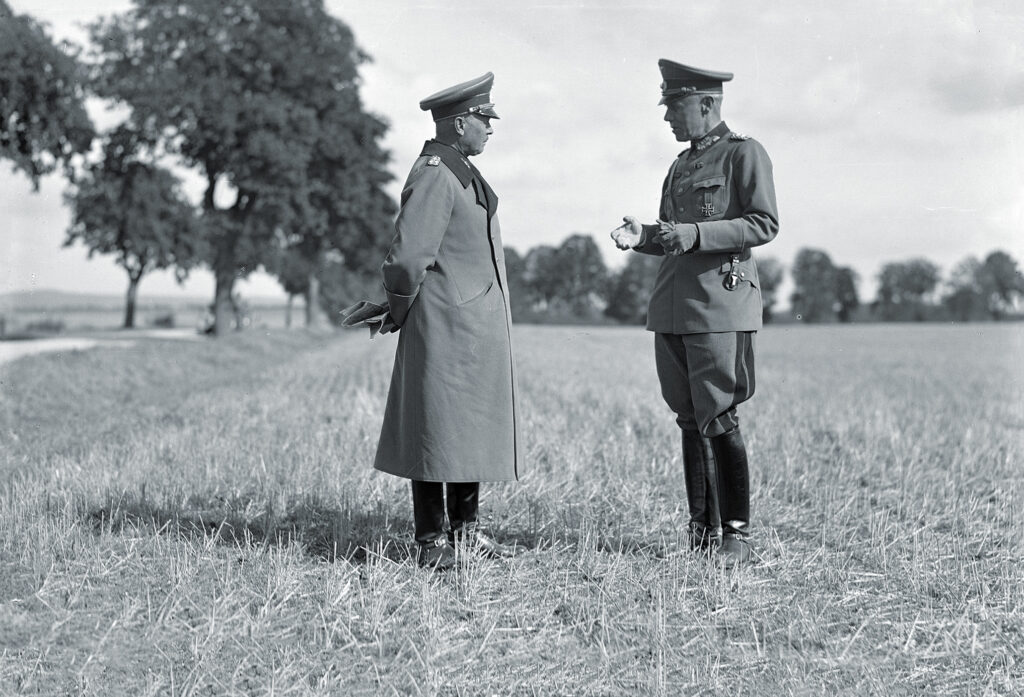
Truppenführung is the key to understanding the psychology, philosophy, and social values of the Wehrmacht at the start of World War II. Tragically, too many of those principles were perverted by the Nazism of the Third Reich as the war progressed. Nonetheless, Truppenführung remains essential to understanding German military operations until the end of the war. In many of its passages Truppenführung was a like a modern version of Sun Tzu’s The Art of War. According to historian Williamson Murray, Truppenführung “remains the most influential doctrinal manual ever written” as well as “one of the most thoughtful examinations of the conduct of operations and leadership.” Murray did not exaggerate. The primary operations manual of the German Bundeswehr today is still called Truppenführung, and it is heavily influenced by many of the concepts in the original 1933 edition. Likewise, when the U.S. Army introduced its AirLand Battle doctrine during the 1980s, the authors of the 1986 edition of Field Manual 100-5, Operations studied the original Truppenführung closely.
Another important principle that emerged from the pages of Truppenführung is what is now called Auftragstaktik (Mission Command Tactics), the idea that senior commanders should tell their subordinate commanders what needs to be done, why it needs to be done, and when it needs to be done—but then give the junior commanders the flexibility to figure out the best way possible to achieve the senior commander’s intent. Although traditional German deference to higher authority and close adherence to established procedures would seem to be the very antithesis of Auftragstaktik, the Wehrmacht made it work to a degree unsurpassed by any other army in history to that point. Oddly enough, the term itself never appears in print in Truppenführung; but the concept comes through clearly in the pages of the manual.
German tactical thinking, however, continued to evolve after the publication of Truppenführung. As General Friedrich-Wilhelm von Mellenthin noted in his classic 1956 book Panzer Battles, the Army General Staff had a series of very intense internal debates between 1935 and 1937 over the use of tanks. Beck at that point tended to subscribe to the then-current French doctrine of committing tanks to close support of the infantry. Generals Werner von Fritsch and Heinz Guderian were among those who argued instead for independent Panzer operations. In his post-war memoirs, Guderian painted Beck—who by then was dead and unable to defend himself—as a narrow-minded defeatist with no operational understanding who even opposed the formation of the Panzer divisions. Various passages in Truppenführung do cover infantry and armor actions that are coordinated, but not combined. The true integration of infantry and armor tactics in the German Army did not take place until after the 1940 campaign in France, when Colonel Hermann Balck recommended the formation of combined infantry-armor teams.
As early as 1934 Beck, in fact, wrote a lengthy cover memo to an extensive report on British Army armored maneuvers, stressing the need for continued evaluation and assessment of evolving armored warfare. And as historian Robert Citino pointed out, the first Panzer divisions started forming in 1935, less than two years after Beck became the chief of the Truppenamt. General Staff exercises that Beck planned that year included notional Panzer divisions and even corps, well before Germany had hardly any tanks at all. Thus, Guderian’s claim to have waged a “long, drawn-out fight” with Beck over the creation of the Panzer divisions can only be overstatement at best.
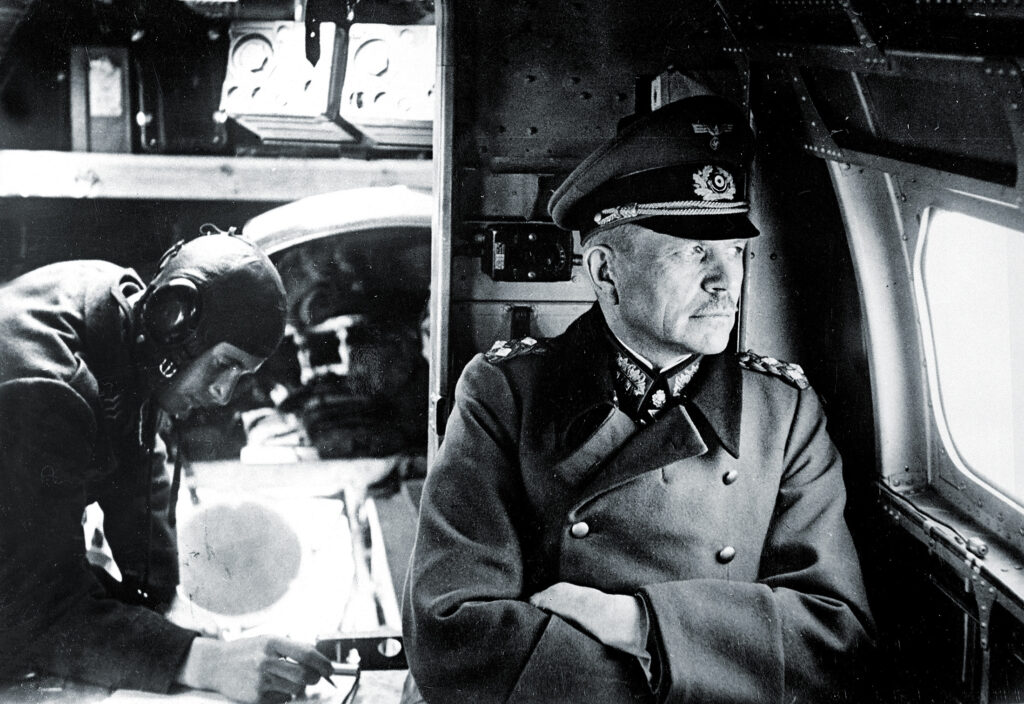
Hitler’s National Socialist movement gained traction during the late 1920s and early 1930s, but Beck never became a member of the Nazi Party, although he continued his rise in the military. He assumed command of the 1st Cavalry Division in Frankfurt an der Oder in 1932 with a promotion to lieutenant general (two stars) and became chief of the Truppenamt on October 1, 1933. Like Hitler, he supported the repudiation of the Versailles Treaty because he believed that Germany had both the need and the right to rearm. In early 1933 Beck naively wrote of Nazism; “I have wished for years for the political revolution, and now my wishes have come true. It is the first ray of hope since 1918.” His optimism, however, did not last long.
After President Paul von Hindenburg died in office on August 2, 1934, Hitler grabbed total power in Germany by combining the offices of president and chancellor, styling himself as the new Führer. Eighteen days later, all German officers were required to swear an oath of fealty to Hitler personally. Beck had serious misgivings, but he failed to raise objections because he believed that Hitler could provide the strong government that Germany needed, while the army’s traditional elements could keep him under reasonable control. It was a Hobson’s Choice, preferable to the paramilitary thugs of the Sturmabteilungen (SA) and Schutzstaffel (SS) becoming the dominant power force in the country. Tragically, that is exactly what happened.
Once Hitler had all the reins of power in hand, he progressively threw off the Versailles Treaty restrictions, first clandestinely, and then openly. On March 16, 1935, he had the Reichswehr renamed the Wehrmacht. Simultaneously, the Truppenamt was re-designated the General Staff of the Army (Generalstab des Heeres), with Beck as its first chief. The so-called “Leader Staff Officers” were redesignated General Staff Officers and authorized to append the traditional “i.G.” (im Generalstab) after their rank titles. That May, Beck was promoted to General of Artillery (three stars). He set to work managing the expansion of the resurrected General Staff. One of his first acts was to re-open the Kriegsakademie as the central point for General Staff Officer training.
Beck adhered to a traditional German militarist worldview. He believed that German military power had to be restored to its pre-1919 levels, and he advocated increasingly greater levels of military spending. His war plans for Germany were initially based on a defensive strategy. He clearly understood that any future large-scale war could all too easily become another multi-front conflict that Germany could not win. Once Germany was sufficiently rearmed, Beck thought that the Reich should conduct a progressive series of limited wars that would establish Germany as Europe’s foremost power and place all of Central and Eastern Europe within the German sphere of influence. Nonetheless, in 1936 he fully supported Hitler during the remilitarization of the German Rhineland—as opposed to many of the other generals who feared the possible French reaction.
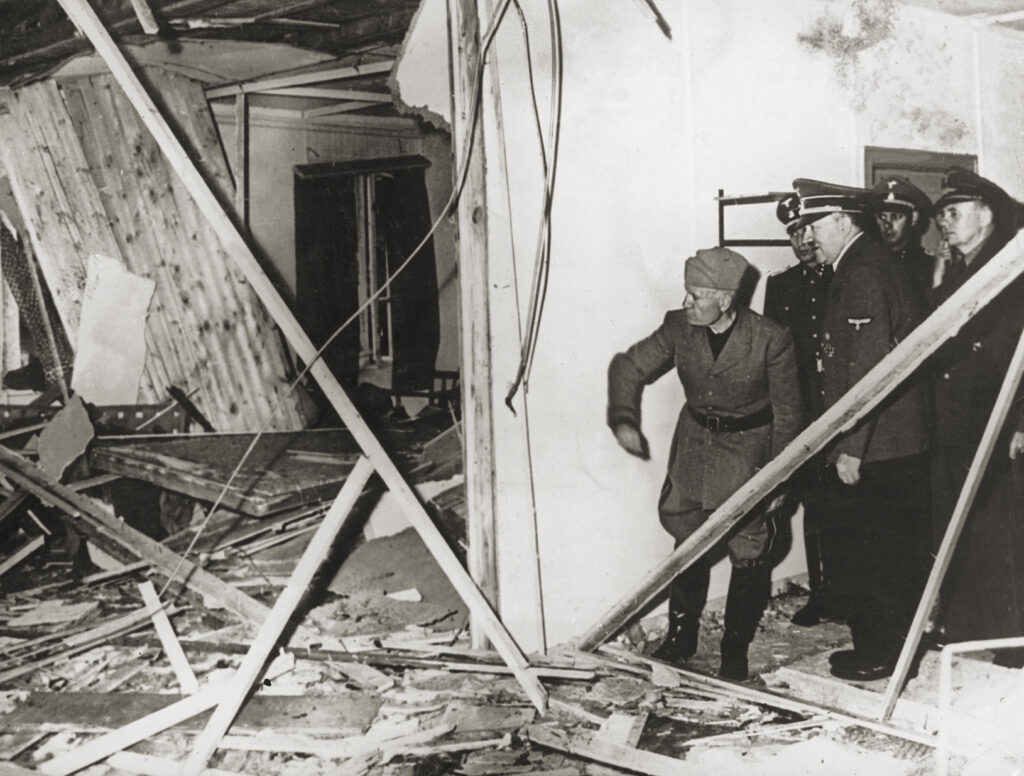
Beck’s close ally was General Werner von Fritsch, the commander-in-chief of the German Army. The two saw their primary task as one of rebuilding the army on the old apolitical traditional model, rather than as an appendage of the Nazi Party. This ultimately put them on a collision course with War Minister General Werner von Blomberg, who intended to remake the army as a mirror of National Socialist ideology. Fritsch and Beck continued to resist the politicization of the army, but Hitler and his key henchmen progressively tightened the political cordon. In January 1938 Blomberg was forced out of office when it was revealed that his new second wife had a lengthy criminal record. Hitler then personally assumed the War Ministry portfolio, making him the commander-in-chief of the Wehrmacht. The following month Fritsch was forced to resign after he was falsely accused of being a homosexual. Fritsch was replaced as army commander-in-chief by the more pliable Colonel General Walther von Brauchitsch. Beck was now politically isolated.
In May 1937, Beck initially resisted issuing the orders for the German invasion of Austria. He apparently had no deep-seated moral objection to the idea of a war of aggression, but he believed that such a move might trigger a world war before Germany had rearmed enough for a major conflict. He believed that the earliest date Germany could risk a war was 1940. Most of the generals also believed that starting a war in 1938 was highly risky; but none of them dared to confront Hitler directly on the issue. Beck issued the orders for the Wehrmacht to march into Austria in March 1938, an invasion that was unopposed.
Beck continued to cling to the belief that the German officer corps could keep the National Socialists under control. But as Hitler pushed to invade Czechoslovakia in 1938, Beck began to oppose him openly, writing a series of memoranda describing the inherent dangers in a premature major military operation. Beck attempted to mobilize other generals to resist what he saw as Hitler’s strategic crapshoot; but he failed to gain the backing of army commander-in-chief Brauchitsch. Increasingly frustrated over Germany’s course, Beck established his own personal intelligence network of German military attachés, which he used both to collect and to leak information. He also reached out to key civilians for his network, with the most notable being Carl Goerdeler, an anti-Nazi and former mayor of Leipzig.
In August 1938, Beck retired from the army in protest. He was promoted to colonel general (four stars) on the retired list. In retirement, Beck organized a covert opposition group of active and retired officers and other conservatives, including Admiral Wilhelm Canaris, the anti-Nazi head of German Military Intelligence (Abwehr).
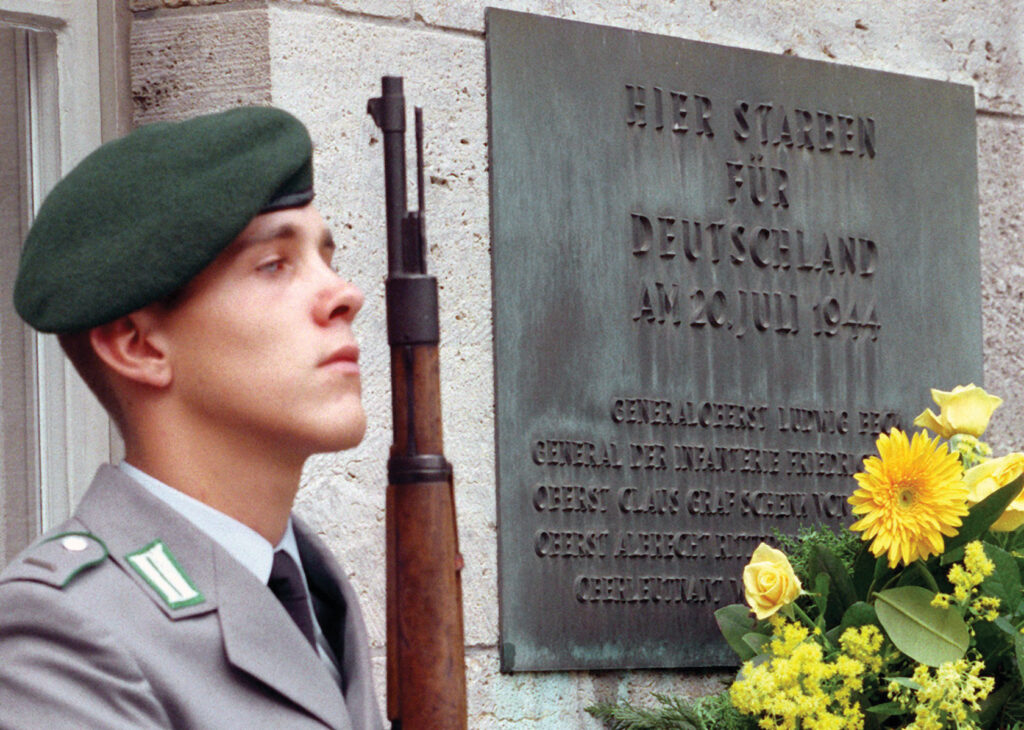
By the start of 1940, before the German invasion of France and the Low Countries, Beck had reached the conclusion that the only plausible way to overthrow the Nazi regime was to remove Hitler from power. Beck’s group even went so far as to reach out to the Vatican to request help in mediating with the Western Allies. At that point, however, the plotters naively believed that they could negotiate a peace settlement with Britain and France that would allow Germany to keep most of its recent conquests—including Austria, western Poland, and the occupied Czechoslovakian provinces of Bohemia and Moravia. A skeptical Britain remained noncommittal. Shortly before the 1940 invasion of Belgium and France, Beck’s group tried to warn the Belgians of the imminent attack.
By 1943, Beck had become convinced that the only way to save Germany was to assassinate Hitler. His group tried several times, culminating in Colonel i.G. Claus von Stauffenberg’s attempt to kill Hitler with a bomb on July 20, 1944. Stauffenberg managed to place the explosive, hidden in a briefcase, beneath a table in a room where Hitler was leading a military conference. The bomb exploded, but another officer had unwittingly pushed the briefcase behind a heavy table leg, shielding Hitler from the full blast and saving his life.
Had Stauffenberg succeeded, the conspirators planned to establish martial law, seize radio stations, and arrest key Nazi and SS leaders. (Beck did refuse to approve their summary execution.) Pending free elections, Beck would have become the acting head of state of the interim government, with Carl Goerdeler as chancellor.
When the conspirators learned that Stauffenberg had failed, Beck insisted on continuing the putsch, called Operation Valkyrie. He believed that Germany deserved the attempt. But the effort failed. Arrested with other key conspirators and taken into custody at the army’s headquarters on Bendler Strasse in Berlin, Beck was offered the privilege of shooting himself to avoid death by torture by the Gestapo. On the night of July 20-21, Beck managed to wound himself. A sergeant then shot the unconscious Beck in the neck, killing him. Having started out in a somewhat loose league with the devil, Colonel General Ludwig Beck died on the right side of history—a German patriot, but one with a clouded legacy.